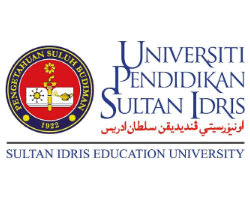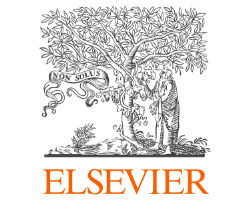Selecting Favourite Majors at Sari Mulia University Using SAW Method
Abstract
A decision support system, also known as a decision support system (DSS), is an interactive information system that offers data, models, and information. DSS is used as a decision aid in semi-structured and unstructured situations where there is no clear decision-making procedure. Determining the preferred major is one of the challenges in universities. The purpose of determining the most popular major is to improve the quality and services provided to students in each department, which is a crucial objective for universities. Currently, Universitas Sari Mulia determines the most popular majors based on qualitative data, which makes the determination of the most popular majors themselves inaccurate; therefore, a method capable of managing data on the selection of the most popular majors is necessary. In this study, the Simple Additive Weighting (SAW) technique will be utilized. This method is used to compare each criterion with one another in order to determine the most popular majors at Sari Mulia University and to evaluate each department.
Downloads
References
F. Alfiando, J. E. Putra, and M. Fiqran, “Sistem Pendukung Keputusan Penentuan Dosen Terfavorit Pilihan Mahasiswa Menggunakan Metode Simple Additive Weighting (SAW),” Majalah Ilmiah UPI YPTK, pp. 1–7, Jun. 2021.
R. Yunitarini and J. Raya Telang Pobox, “Sistem Pendukung Keputusan Pemilihan Penyiar Radio Terbaik,” Jurnal Ilmiah Mikrotek, vol. 1, no. 1, 2013.
T. A. Sundara, I. Stephane, and M. Fadli, “Sistem Pendukung Keputusan Pemilihan Guru Terbaik dengan Metode Weighted Product Pada MAN 1 Pariaman,” Jurnal Informatika, vol. 6, no. 2, pp. 310–321, 2019.
A. H. Simon, Decision Support Sistem and Expert Sistem. USA: Prentice Hall Inc, 1995.
M. Elistri, J. Wahyudi, and R. Supardi, “Penerapan Metode SAW Dalam Sistem Pendukung Keputusan Pemilihan Jurusan Pada Sekolah Menengah Atas Negeri 8 Seluma,” 2014.
D. U. Daihani, Komputerisasi Pengambilan Keputusan, Jakarta: PT. Elex Media Komputindo, 2001.
Rusliyawati, Damayanti, S. N. Prawira, Implementasi Metode Saw Dalam Sistem Pendukung Keputusan Pemilihan Model Social Customer Relationship Management, Jurnal Ilmiah Dutic, vol. 7, no. 1, 2020.
M. Alsurori, J. Salim, “Information and Communication Technology for Decision-Making in the Higher Education in Yemen: A Review,” International Conference on Electrical Engineering and Informatics, August 2009, Selangor, Malaysia.
D. J. Power, “Supporting Decision-Makers: An Expanded Framework,” e-Proceedings Informing Science Conference, Krakow, Poland, June 19-22, pp. 431- 436, 2001.
I. E. Livieris, K. Drakopoulou, T. Kotsilieris, V. Tampakas and P. Pintelas, “DSS-PSP - A Decision Support Software for Evaluating Students’ Performance,” in Proceeding of 18th International Conference on Engineering Applications of Neural Networks (EANN 2017), 2017.
T. Mufizar, D. S. Anwar and E. Aprianis, “Decision Support System of Major Selection Using Saw Method in SMA 6 Tasikmalaya,” Jurnal VOI STMIK Tasikmalaya, vol. 5, no. 1, 2012.
Prayoko, M. Riki, “Sistem Pendukung Keputusan Penentuan Jurusan Pada Sekolah Menengah Atas SMA Setia Budi Abadi Perbaungan Dengan Menggunakan Metode Simple Additive Weighting (SAW),” Jurnal Ilmiah Pelita Informatika Budi Darma, vol. 5, no. 2, 2013.
D. Pratiwi, J. P. Lestari, A. Dewi, “Decision Support Systemto Majoring High School Student Using Simple Additive Weighting Method,” International Journal of Computer Trends and Technology (IJCTT), vol. 10, no. 3, 2014.
P. M. Kumari, S. K. Abdul Nabi and P. Priyanka, “Educational Data Mining and its role in Educational Field,” International Journal of Computer Science and Information Technologies (IJCSIT), vol. 5, no. 2, 2014.
Syamsudin and R. Rahim, “Study Approach Technique for Order of Preference by Similarity to Ideal Solution (TOPSIS),” International Journal of Recent Trends in Engineering & Research, vol. 3, no. 3, pp. 268-285, 2017.
H. M. Ritonga, H. A. Hasibuan and A. P. U. Siahaan, “Credit Assessment in Determining the Feasibility of Debtors Using Profile Matching,” International Journal of Business and Management Invention, vol. 6, no. 1, 2017.

























